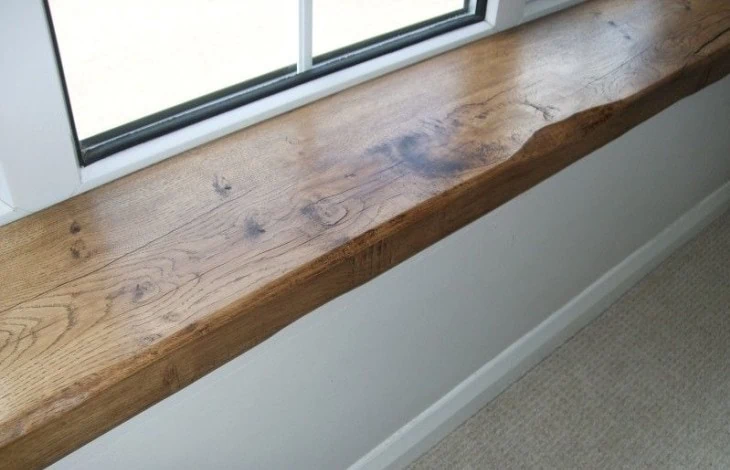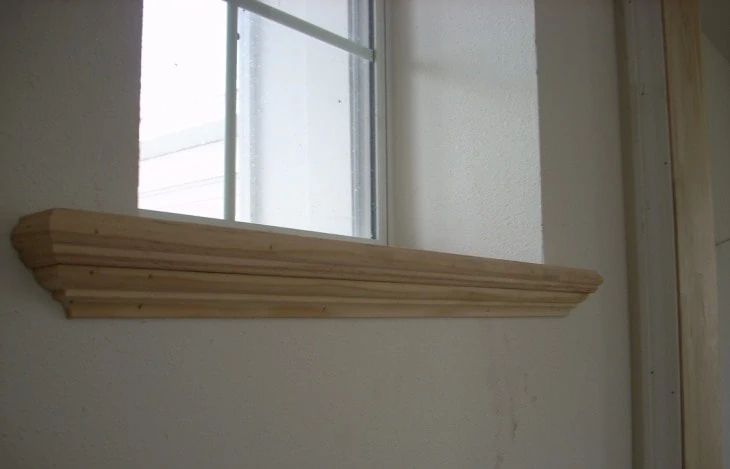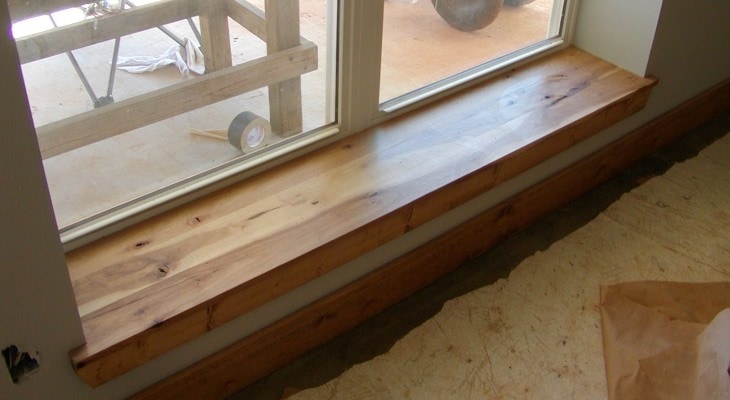If you’re looking to replace your window sill, you need to be careful with your choice of wood. Some types of wood are ideal for this application, while others will cause various problems in the long term. These may include rotting, swelling, and other issues that will eventually force you to go through the whole replacement process from the start.
Both hardwood and softwood can work well for a window sill. Oak and pine are particularly popular choices. Pressure-treated wood is sometimes used as well, and plywood is a budget-friendly alternative. You should avoid poplar wood and MDF, as they are prone to problems when used on window sills.
Table of Contents
Oak

Hardwood is a very popular choice for window sills. And in that category, oak is a favorite choice for many professional builders. Oak is great for window sills that need to last a long time due to its durability and resistance to weather effects.
No matter where you live, you should have plenty of options for different types of oak wood. It’s one of the most popular types of wood on the market. Not just for window sills, but for all kinds of construction projects in general.
Another benefit of oak is that it’s relatively inexpensive as far as hardwood goes. Hardwood is generally not the cheapest option you can go for, but oak can still work well even on a limited budget.
Pine
Softwood can work great for window sills too, provided it’s treated correctly. Pine is easy to paint and doesn’t swell much, making it perfect for this application. It’s also significantly cheaper than oak or other types of hardwood.
Many experts recommend pine by default. If you’re looking for a good balance between durability, price, and ease of use, it’s one of the best options you have.
And while we’re on the subject of softwood, cedar deserves an honorable mention as well. The only downside of cedar is that it might be a bit wasteful for use in a window sill. One of the main advantages of this type of wood is its natural beauty, but since you’re going to paint over it to preserve it, you will never get to see the wood itself.
Pressure-treated Wood
Pressure-treated wood is a somewhat controversial topic in the professional community. While it’s perfectly suitable for a window sill, it also requires some additional treatment. If the wood is not handled properly, it can quickly rot.
To get the most out of a window sill made of pressure-treated wood, you should ensure that the wood has been allowed to dry for a sufficiently long time – usually a few months. On top of that, you must thoroughly paint it to prevent any moisture from getting in.
Painting is always a good idea when you’re using wood for any application where significant moisture is involved. But while this step can be skipped for some sturdier types of wood, it’s mandatory when working with pressure-treated wood.
Plywood

Plywood is often seen as a cheap, low-grade option for pretty much any application. But it can make a great choice of material for your window sill.
It doesn’t suffer from the expansion problems commonly associated with some more expensive wood types. It preserves its shape almost perfectly over a period of a few years. And it’s also quite cheap.
With a good paint job, nobody has to even know that your window sills are made of plywood. If you’re on a budget, this can be a great option. Just make sure that you understand the treatment requirements of plywood before committing to using it.
Wood Types to Avoid
Now that we’ve covered the most popular types of wood for window sills, let’s take a look at some options you should avoid at all costs.
You might sometimes see poplar as a suggestion in related discussions. It’s almost never a good idea to use it for a window sill, however. Poplar is prone to rotting quickly and requires careful, thorough treatment to prevent this. Even experts might struggle to craft a poplar window sill that doesn’t eventually succumb to rot.
Medium-density fiberboard (MDF) is another option that should be actively avoided. It’s well-known for swelling from even small amounts of moisture. And it doesn’t even bring any advantages to the table to compensate for that.
Final Thoughts
Choosing the right type of wood for your window sill is more important than you might assume. Even if you don’t live in an area with particularly bad moisture problems, your window sill will still accumulate more water than most other parts of your home.
On top of picking the right type of wood, you must also ensure that you treat it properly. Otherwise, even expensive oak or pine will eventually rot or swell and will have to be replaced.

